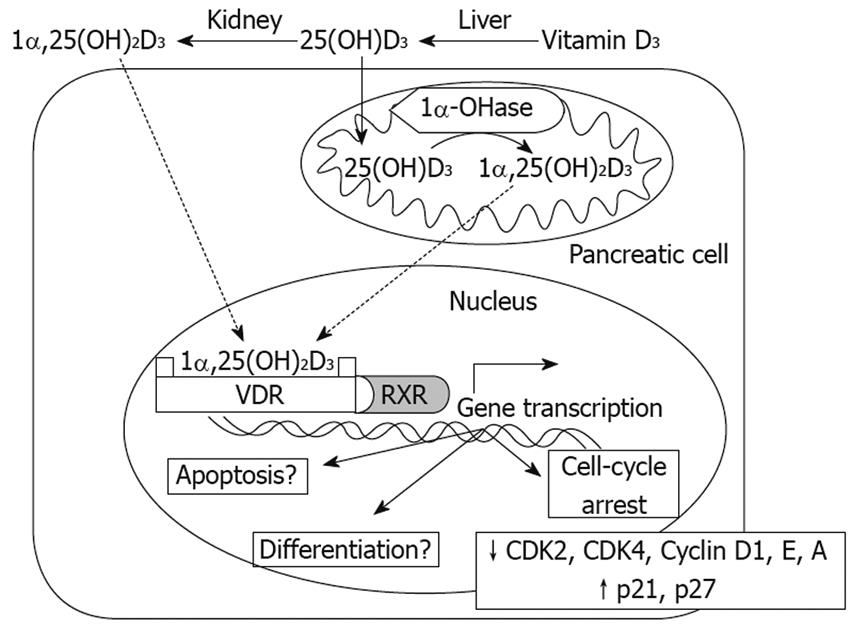Copyright
©2009 The WJG Press and Baishideng.
World J Gastroenterol. Jul 21, 2009; 15(27): 3349-3354
Published online Jul 21, 2009. doi: 10.3748/wjg.15.3349
Published online Jul 21, 2009. doi: 10.3748/wjg.15.3349
Figure 1 Mechanisms of Vitamin D3 action on pancreas cells.
Both 1,25(OH)2D3 and 25(OH)D3 can enter pancreas cells, where 25(OH)D3 can be converted to 1,25(OH)2D3 by 1α-OHase. 1,25(OH)2D3 can bind the VDR and further combine with the retinoid X receptor (RXR) to form a heterodimer, VDR-RXR. The VDR-RXR heterodimer binds to specific vitamin D response elements located in the promoter region of vitamin D-responsive genes, which in turn induces gene transcription. So far, in terms of pancreas cells, inhibition of CDK2, CDK4, Cyclin D1, Cyclin E, Cyclin A and upregulation of p21 and p27 have been demonstrated, leading to a block in the cell cycle at G0/G1. Regarding induction of differentiation, apoptosis and other anticancer mechanisms, further studies are required.
- Citation: Chiang KC, Chen TC. Vitamin D for the prevention and treatment of pancreatic cancer. World J Gastroenterol 2009; 15(27): 3349-3354
- URL: https://www.wjgnet.com/1007-9327/full/v15/i27/3349.htm
- DOI: https://dx.doi.org/10.3748/wjg.15.3349









